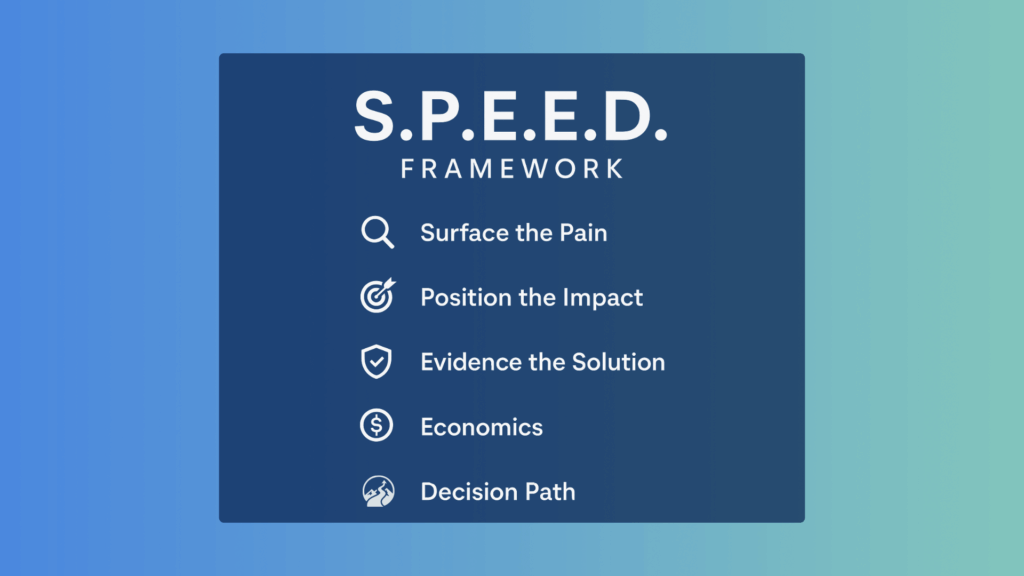Any business serving clients in multiple languages faces the same challenge: language access is no longer optional but mission-critical. Healthcare providers, customer support teams, and legal professionals all know what happens when language gaps go unaddressed: compliance risks, lost revenue, and frustrated customers.
Traditionally, on-site interpreting has been the go-to solution, but it has limitations such as cost, scheduling complexity, and availability outside of business hours. This is why on-demand interpreting is not just a tool. It is the future of scalable, accessible language services.
This shift represents a growth opportunity for language service providers (LSPs). However, selling a technology-driven solution requires a new approach. That is why we created the S.P.E.E.D. framework: a step-by-step guide to move business owners from pain recognition to confident adoption of on-demand interpreting.
A Quick Look at On-Demand Interpreting
Before we get into the framework itself, let’s quickly discuss on-demand interpreting and how it works. On-demand interpreting is a type of interpretation technology that allows individuals to access over-the-phone or video remote interpreting services in real-time using their laptops, phones, or tablets.
This method of interpreting is particularly useful for high-volume environments like customer support centers, healthcare, and legal fields, which frequently serve people in different languages. The primary advantage of on-demand interpreting is that it provides quick access to professional interpreters in many languages and specializations, regardless of time and location.
On-Site vs On-Demand Interpreting
On-site interpreters have been considered one of the best ways to provide full language access. However, some businesses have language needs beyond their operating hours or may not have the budget for on-site interpreters. This is where on-demand interpreting services typically come into play.
The S.P.E.E.D. Framework
How do you convincingly sell on-demand interpreting to business owners who remain skeptical or haven’t heard of it yet? The S.P.E.E.D. framework is a structured approach to conducting sales strategies that result in conversions, serving as a practical guide for LSPs on how to sell on-demand interpreting. It stands for:
- Surface the Pain
- Position the Impact
- Evidence the Solution
- Economics
- Decision Path
Here’s a quick look at it in action from a recent webinar hosted by Taylor Cannetti, lead account manager at Boostlingo, and Yasha Santana, sales manager at Kings of Translation:
Each step builds on the previous one, moving prospects from recognizing their challenges to confidently choosing your solution.
How to Sell Remote Interpreting
Let’s break down the framework:
S – Surface the Pain
The first step is to uncover the challenges your client faces. What are your primary language needs, and how are they being handled? Do you encounter issues with scheduling because your interpreters are spread too thin? Can you meet your language needs past 5:00 p.m. and on the weekends? These are the types of questions you need to prepare and ask your clients, because when they reflect on these frustrations, they tend to be more open to change.
For example, interpreter scheduling problems hurt businesses because coverage delays or gaps lead to missed calls, lost revenue, and compliance risks. By reminding them of these pain points, you create urgency and relevance.
“Whenever we ask a client what their biggest challenges are, it’s the easiest way to gain some insight and provide that information for them in terms of what the platform has to offer, and the services we have to offer.”
– Yasha Santana, Sales Manager – Kings of Translation
P – Position the Impact
Once you’ve pointed out your client’s pain points, you need to drive home the potential impacts they can have and how they connect to the outcomes that matter to their business. Tie those pain points to broader consequences and connect operational inefficiencies to real-world outcomes, including:
- Compliance risks and regulatory penalties
- Lost billable minutes and revenue
- Customer loss from poor experiences or dropped calls
- In healthcare, 24.3% readmission rates for patients without interpreter assistance during admission and discharge
Once clients realize that language access issues have more repercussions than just inconvenience, the stakes become higher and undeniable.
E – Evidence the Solution
Your client’s problems have been laid out, and their possible outcomes have been brought up. Now it’s time to show that you can deliver. Drop tangible proof points that show the reliability and scale of your on-demand interpreting services.
For example, one of our biggest selling points at Boostlingo is that we have a 13-second average connection time to our interpreters, so we make sure to show that off at the first chance we get. Not only does it solidify our platform’s dependability, but it also provides quicker and better access to professional interpreters 24/7.
E – Economics
Give a detailed explanation of how on-demand interpreting, despite its initial costs, can lessen expenses in the long run. Besides calculating saved minutes and billable rates, you can also illustrate how fewer compliance penalties and customer complaints can lead to lower costs. Whatever you do, do not skip the calculations. Remember, one of the driving factors in a business owner’s decision-making is the return on investment.
If you haven’t got any idea of how to start, you can try highlighting how on-demand interpreting services can easily handle short and routine language needs, even during off-hours. This allows a business’s on-site interpreters, if any, to focus on the more complex encounters where they’re suited. Mentioning that having all features in a single, consolidated platform will reduce overhead costs can work as well.
In essence, clear economic logic turns your service from “nice to have” to “business critical”.
“You tie in all the things we talked about – their pain, their time, their cost – all the things that are causing them trouble when they need language access. If you provide them with all these tools and solutions that happen to be cheaper, then I think the economy of it pretty much explains itself and makes it an easy decision.”
– Taylor Cannetti, Lead Account Manager – Boostlingo
D – Decision Path
Once everything’s all said and done, it’s time to lay out the steps they need to take next. Potential customers shouldn’t have to jump through hoops to engage with your services, so make sure they feel that the path forward is achievable and risk-free.
Provide a free sandbox environment to test the platform or a pilot project with limited call volume so they can get a feel of how your service works and how they can navigate around it. You can also prepare a service level agreement (SLA) to let them know how far the service extends and what they can expect.
Sell More With S.P.E.E.D
Selling on-demand interpreting is not about pitching a feature. It is about positioning yourself as a partner who removes the barriers to communication. The S.P.E.E.D. framework gives you the structure to do just that: surface real challenges, tie them to business-critical outcomes, and present a solution that is both scalable and financially sound.
When you align your sales process to S.P.E.E.D., you do more than close deals. You change the way organizations think about language access.
Want to see this framework in action? Watch our Mastering the Demo with Kings of Translation webinar and learn how Kings of Translation applies the S.P.E.E.D. method to engage clients, remove adoption barriers, and win more business with on-demand interpreting.



